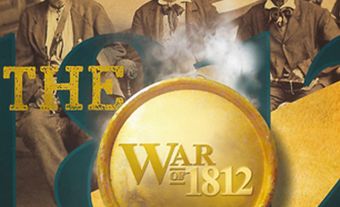The Battle of New Orleans (8 January 1815) has the unique distinction of being the last major battle of the War of 1812; it took place after the war was officially over. With the defeat of Napoleon in Europe, Britain could stop fighting a two-front war against both revolutionary France and the United States. Britain began to consolidate its forces in North America to deliver critical blows from both land and sea to the American forces in late 1814. Sadly, for the British, their ambition was forestalled by American gumption and a series of critical failures that prevented their amassed numbers from securing victory.

American Defences at New Orleans
Britain's goal was to capture New Orleans, Louisiana, with its vast stores of sugar and cotton, and prevent the US from using the Mississippi River to flow goods and soldiers. On 10 December 1814, Vice Admiral Alexander Cochrane's fleet landed on the east bank of the Mississippi. They defeated the small flotilla of American gunboats protecting the mouth of the river. The Americans were under the command of Lieutenant Thomas ap Catesby Jones at the Battle of Lake Borgne. The British advance guard was 1,600 men strong, but could not press the attack until the arrival of their commander, Sir Edward Pakenham. He arrived late due to adverse winds and therefore, perhaps sealed the fate of the campaign through no fault of his own. Jones's courage in the face of British superiority in numbers earned him praise and bought time for the defenses of New Orleans to be secured.
If they had pressed their advance on the 24th, the British would have found New Orleans' defences in shambles. American general and future president Andrew Jackson had not yet solidified his defences. However, on Christmas day, when Pakenham arrived to lead his troops toward battle, Jackson secured his structures and prepared for an attack. Soldiers and African slaves hastily constructed a breastwork (a temporary military fortification) of sugar barrels, earth and a ditch. It stretched out to an impassible swamp and gave Jackson’s men a strong defensive position to repel the British. Jackson thought the British numbered somewhere near 25,000 strong. Artillery was mounted to protect the earthwork. The Americans dug in their heels and prepared for the worst as Pakenham arrived to command the British.
Pakenham was a professional soldier with a distinguished career who had seen service in North Ireland, North America and in the Peninsular War against the occupying forces of Napoleon. Pakenham arrived to command a difficult position. There had been a costly skirmish, and it was followed by a costly reconnaissance. Cochrane's forces had brought artillery at great expense and haste, but their fire could not hit the breastwork from any safe distance, and they were soon destroyed by American artillery fire.

Pakenham's Attack on New Orleans
With 6,000 regulars and 1,000 Black soldiers from two West India Regiments, Pakenham refused to admit defeat and attempted a deceptive blow against Jackson's defences on 8 January 1815. British army officer Colonel William Thornton of the 85th regiment crossed the river with 1,500 regulars to attempt to outflank the American position. Jackson defended his position with roughly 4,000 men.
Things went poorly for the British from the start. Canals dug by Cochrane's men crumbled before all the attack boats could cross. But Thornton's bold action subdued 800 Kentucky militiamen and denied them the use of naval guns, then they allowed Thornton's men to advance behind Jackson's position. Following this advance, Thornton was to use artillery fire and rockets to plow into the American forces, but they were off schedule. Some officers failed to bring ladders and other resources necessary to circumvent the embankment. Muddy conditions led to a clogging of marching and firing lines, making the slow-moving British good targets for American artillery. Blood, mud, fog and confusion soon covered the battlefield. Few British soldiers managed to reach the parapet (a protective wall for the concealment of troops). Those who did were not supported in any meaningful way and ended up being killed or captured. The two main assaults failed to make a breach to be exploited. The Americans prepared effective rolling firing lines four men deep to keep as much concentrated fire going as possible. British ships bombarded Fort St Philip and tied down forces there for 10 days. But the tide of victory was not turning in Britain's favour.
Watching the attack going sour, Pakenham attempted to rally his troops to renew the assault, but was hit by grapeshot (cannon charge consisting of small round balls) in the knee, and his horse was killed. More grapeshot tore through his spine and he succumbed to his wounds, at the young age of 36. As the assault waged on against the formidable Jackson and his men, many of Pakenham's senior officers were either killed or gravely wounded. The British suffered more than 2,000 casualties trying to oust the entrenched American forces, while the Americans suffered only 71.
The British Attack on Fort Bowyer
Under the command of Major General John Lambert, the surviving and still substantial British forces retreated to their naval forces and set sail for Biloxi, Mississippi. While the campaign against New Orleans was over, Lambert wanted to continue the fight. He and his forces invested Fort Bowyer on 8 February 1815, and three days later the Americans surrendered. Lambert began to craft further operations when news arrived that the Treaty of Ghent had been signed. He informed the campaigning British that the war had been formally over since 24 December 1814. All hostilities on American soil stopped.
Significance
The Battle of New Orleans was the last major confrontation of the War of 1812. As peace returned, and the Treaty of Ghent was observed, British troops removed themselves from American soil and all land was returned. The battle is best remembered for General Andrew Jackson's stiff resistance to British incursion and the death of the young and promising Major General Edward Pakenham, who, rather unjustly, is remembered chiefly for his failure at the Battle of New Orleans.

 Share on Facebook
Share on Facebook Share on X
Share on X Share by Email
Share by Email Share on Google Classroom
Share on Google Classroom










